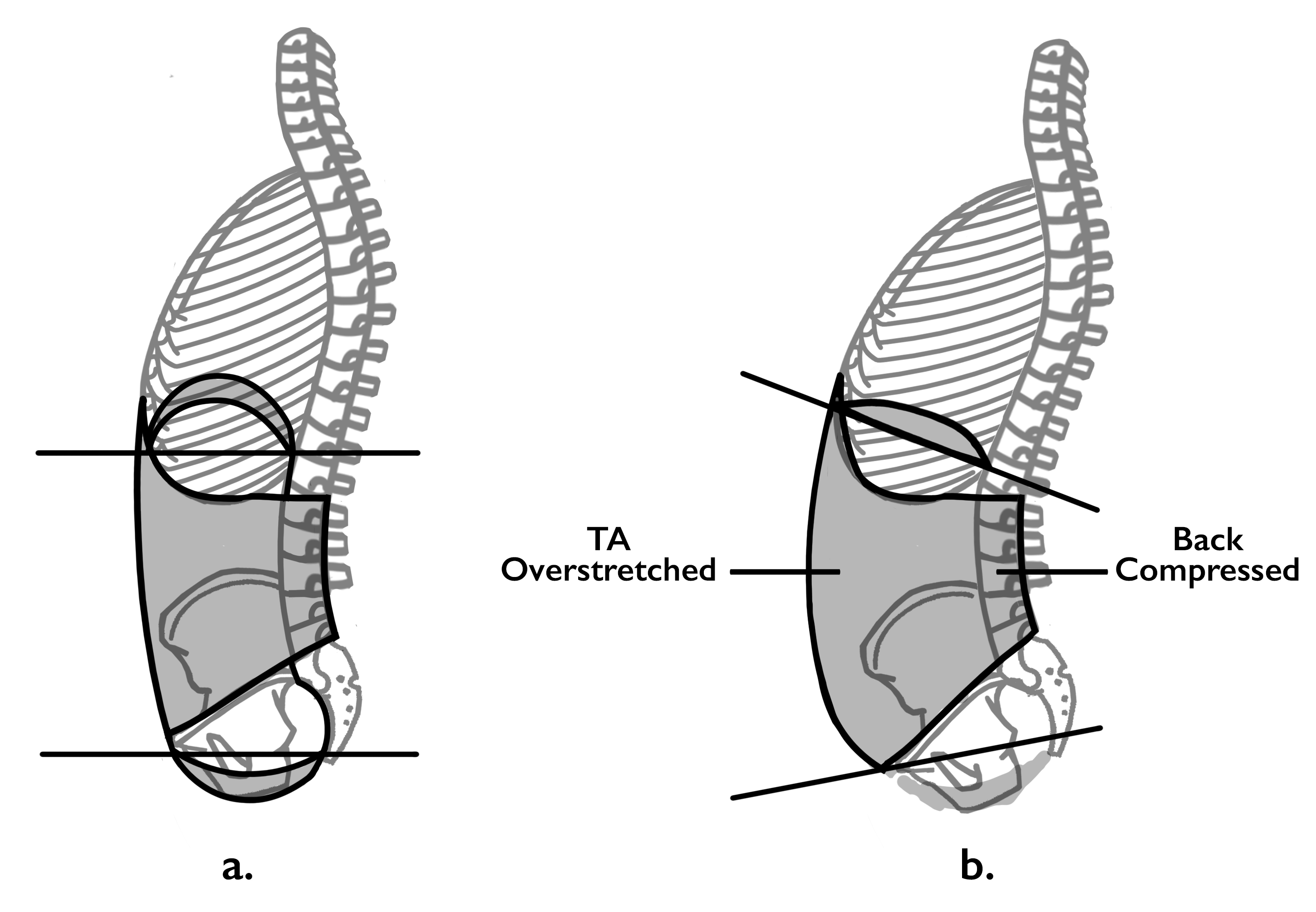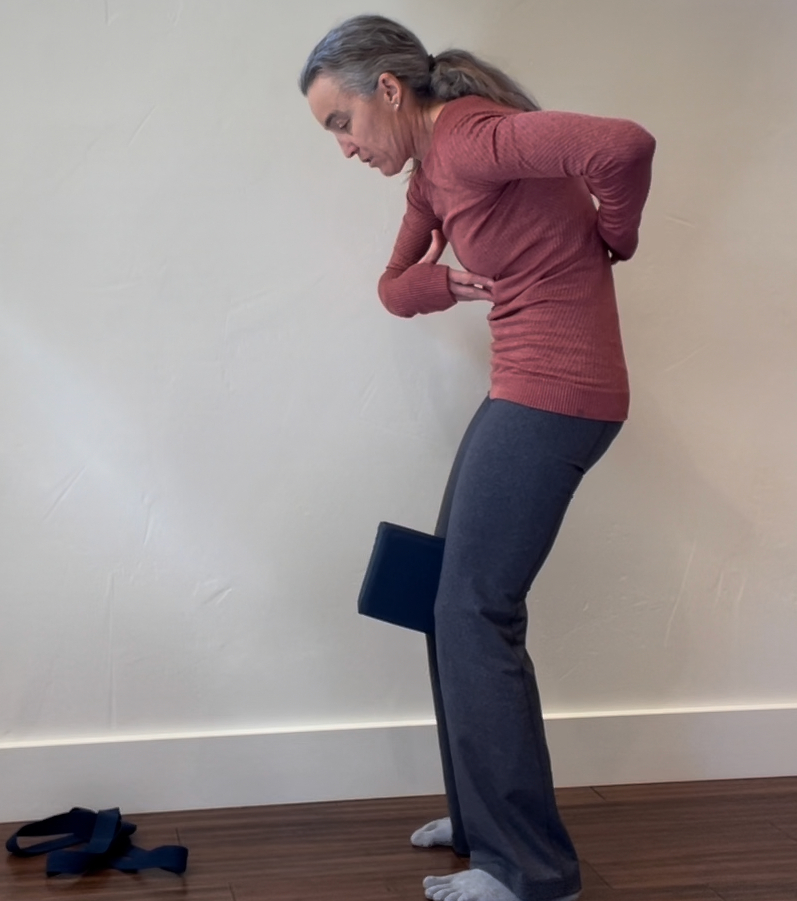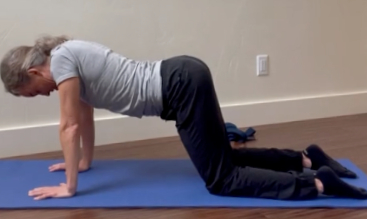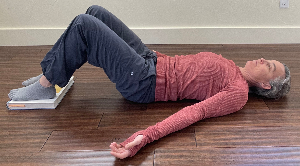3 Gentle Back Extension Exercises
Apr 13, 2022
Back extension is a normal human movement! However, doing back extension exercises, particularly of the lumbar spine (low back), is not universally practiced or accepted. In fact, people have strong opinions about this issue. I have had students refuse to do these types of exercises in class--they’d just stare at me with evil eyes and shake their heads as I demonstrated these positions. In contrast, I have clients that swear by Foundation Training for back pain relief, which is based on back extension exercises. You can read more about this type of training in my blog: Relieve Back Pain with Foundation Training.
My opinion of back extension exercises has evolved, and as I experience more and more, it continues to be refined. Over time, I’ve modified my opinion because of three main factors: my students and clients; my own personal experience; and science.
1. My Students and Clients. Interactions like those described above with students/clients and seeing the passion on both sides of the issue has motivated me to learn more. Also, I’ve observed my private clients’ responses to back extension exercises and have seen how it affects both their posture and their pain.
2. Personal Experience. When I began posture therapy myself, the back extension exercises actually dramatically increased my pain! But here’s why: A key to healthy posture is that it is dynamic: it can go into and out of opposite positions (e.g., back extension and back flexion). The problem I had, though, was that I was stuck in extreme extension. So, when I attempted to put my lower back into more extension, it just didn’t have anywhere to go before causing pain. I was already at the end of my range of motion.
That is not to say that if your body is in extension, you shouldn’t do extension exercises. And yes, I realize that may sound counter intuitive, especially given my example. But it really depends on the severity of your posture. And, when the body is accustomed to being in extension, it may resist going into flexion. So, instead of trying to force the body to go against its current position, which it may have had for a very long time, we need to work with it. You’re in back extension, so we go with what the body is naturally doing–gently. This motion loosens your tissues so that you can start to move in the reverse direction. Sometimes we must go a little deeper into extension to create flexion. If, like me, you are at or near the end of your range of back extension motion, this could be painful, so you want to start easy, with the simple exercises below.
3. Science. I am uniquely certified through both the Postural Restoration Institute® (PRI) and the Egoscue Institute® (EI). These institutions seem to have contrary views about back extension. Let me explain.
Back Extension: Postural Restoration® (PRI) vs the Egoscue Method®
 PRI has a primary focus on rib cage and pelvic alignment with the respiratory and pelvic diaphragms in opposition to each other, as shown in figure a in the images to the right. When the spine is in lumbar extension (figure b) this alignment of the diaphragms is absent; the transverse abdominis (TA) is overstretched; and breathing, another central focus of PRI, is compromised. Therefore, most of the PRI exercises have the lumbar spine in a neutral or flexed position.
PRI has a primary focus on rib cage and pelvic alignment with the respiratory and pelvic diaphragms in opposition to each other, as shown in figure a in the images to the right. When the spine is in lumbar extension (figure b) this alignment of the diaphragms is absent; the transverse abdominis (TA) is overstretched; and breathing, another central focus of PRI, is compromised. Therefore, most of the PRI exercises have the lumbar spine in a neutral or flexed position.  The image to the left shows the starting position for a PRI exercise.
The image to the left shows the starting position for a PRI exercise.
 On the other hand, EI exercises often have the low back in extension, as shown in the image to the right. EI encourages regaining all function of the body and realigning the skeleton into neutral posture. Many times, lumbar extension is used with the intention of opening the thoracic (mid-back) spine. As I like to say, the spine is one long bone with many moving parts. Changing the curve in one area–lumbar, thoracic, or cervical (neck)–can impact the whole chain. In the exercise pictured, called static extension position, for example, lumbar extension is used to encourage extension higher up in the spine and reduce rounding of the mid and upper back.
On the other hand, EI exercises often have the low back in extension, as shown in the image to the right. EI encourages regaining all function of the body and realigning the skeleton into neutral posture. Many times, lumbar extension is used with the intention of opening the thoracic (mid-back) spine. As I like to say, the spine is one long bone with many moving parts. Changing the curve in one area–lumbar, thoracic, or cervical (neck)–can impact the whole chain. In the exercise pictured, called static extension position, for example, lumbar extension is used to encourage extension higher up in the spine and reduce rounding of the mid and upper back.
With these two different approaches to back extension, I had to come to a compromise that I felt was a good blending of PRI and EI for my classes and clients. Recall the statement I started this article with: Back extension is a normal human movement! To that end, I include all the ranges of motion of the lumbar spine–extension, flexion, and neutral--in my classes and as much as possible and appropriate with my individual clients. The biggest integration I have made with PRI and EI is my strategy for repositioning the thoracic spine. Although I do include exercises like the static extension position (pictured above), I often have students/clients stabilize the low back in a neutral position through core activation during an upper body exercise. This maintains the diaphragm alignment that PRI strives for and allows repositioning of the thoracic spine without compensation from the low back.
Exercises
Back extension occurs in three planes of motion: sagittal (front to back), frontal (side to side), and transverse (rotational). Although movement in these planes is simultaneous, each of the exercises below emphasizes a different plane of motion for the spine.
You can watch a video of these exercises below.
Starting position for all exercises
 Begin lying on your back with your knees bent at 90 degrees. Put your feet on the floor, pointing straight ahead and hip-width apart. Place your hands at your sides with the palms facing up. Your lumbar spine is in extension (arched) in this position. This posture alone may actually be enough to start with. To reduce the amount of extension in your back, you can put your feet up on a book, which will tilt your pelvis back slightly.
Begin lying on your back with your knees bent at 90 degrees. Put your feet on the floor, pointing straight ahead and hip-width apart. Place your hands at your sides with the palms facing up. Your lumbar spine is in extension (arched) in this position. This posture alone may actually be enough to start with. To reduce the amount of extension in your back, you can put your feet up on a book, which will tilt your pelvis back slightly.
Active Frog (sagittal plane)
- Start by bringing your feet and knees together until they touch.
 Next, as you inhale through your nose, open your knees out slightly and allow your feet to roll onto the outside edges. This externally rotates your hips and pulls the pelvis forward, increasing the extension of your low back.
Next, as you inhale through your nose, open your knees out slightly and allow your feet to roll onto the outside edges. This externally rotates your hips and pulls the pelvis forward, increasing the extension of your low back.- Now, as you exhale out your mouth, bring the knees back together to touch. Your feet will come back to a flat position on the floor. This internally rotates your hips and pulls the pelvis backward, decreasing the arch in your low back.
- Continue this gentle movement of the knees out and together, allowing the back to gently move forward and back in the motion of a pelvic tilt.
- Complete 10-20 repetitions.
- Modification: If rotation of your hips limits your ability to do this exercise, you can keep your feet hip-width apart and do only the pelvic tilt motion. In this modification, you will tilt the pelvis forward to create lumbar extension, followed by a posterior tilt to create lumbar flexion. Start small and build up.
Knee Drops (transverse plane)
- Start by inhaling through your nose as you drop both knees to the right side. Begin with a small range of motion to see how your body responds.
 As you drop your knees to the left, rotate your head to the right. If this movement causes discomfort, though, skip this part and keep your head in a neutral position, looking straight up at the ceiling.
As you drop your knees to the left, rotate your head to the right. If this movement causes discomfort, though, skip this part and keep your head in a neutral position, looking straight up at the ceiling.- Next, as you exhale out your mouth, bring your knees back to the starting position and rotate your head to the center.
- Repeat the movement on the opposite side. Feel the increasing length through your lumbar spine as you rotate.
- Complete 10 repetitions on each side.
- Progression: To increase the intensity of this exercise, you can move your feet wider apart.
Unilateral Arm Glides (frontal plane)
 Start with your arms in the field goal or cactus position. Elbows should have a 90-degree bend with a straight line from your shoulder to elbow and elbow to wrist. Having your hands above your chest often increases extension in your lumbar spine. You may want to simply hold this position initially.
Start with your arms in the field goal or cactus position. Elbows should have a 90-degree bend with a straight line from your shoulder to elbow and elbow to wrist. Having your hands above your chest often increases extension in your lumbar spine. You may want to simply hold this position initially.- Move just your left arm over your head as you exhale out your mouth. The arm angles do not change. The rotation is from the shoulder blade. Try to keep the back of your hand, fingers, arm, and shoulder blade on the ground. Once your hand is above your head, reach straight up. Your arm will come off the ground, but you want to keep your hand in contact with the floor. Notice the stretch along your spine on that side.
 Next, bring the arm back down to the starting position as you inhale through your nose.
Next, bring the arm back down to the starting position as you inhale through your nose.- Complete 5-10 repetitions.
- Switch sides and repeat.
Summary
Back extension is a normal human movement! It is possible to get stuck in lumbar extension without the ability to go into flexion. Moving more into extension is sometimes what is needed to mobilize the body and allow for the opposite movement. This needs to be done gently. The Postural Restoration Institute® (PRI) and the Egoscue Institute® (EI) vary in their use of back extension exercises in their posture therapies. I blend these approaches for the best outcomes for my students/clients. The exercises provided in this blog move the back into extension in three ranges of motion. Learn more back extension exercises by attending my live online posture fitness classes.
Stay connected with news and updates!
Join our mailing list to receive the latest news and updates from me.
Don't worry, your information will not be shared.
We hate SPAM. We will never sell your information, for any reason.

